General Syllabus
The topics that will be covered in the competition are:
1. Structure of an atom and nucleus
- The basic components of an atom
- Basic characteristics including proton, electron, and neutron
- The models explaining the atomic structure (evolution of models)
- Isotopes (stable and unstable), isotones, isobars, isomers
- The periodic table of elements
- Properties of nucleus (size, mass, etc.)
- Basic particle physics (quark composition of subnuclear particles)
- Currently excluded: Shell model of nucleus, advanced quantum mechanics
2. Radiation
- Different types of radiation (alpha, beta, gamma, x-ray, neutron, ionizing and non-ionizing & understanding electromagnetic spectrum)
- Types of radioactive decay based on nucleus instability
- Differentiate between properties of radioactive emissions (calculations of daughters, conservation of mass/energy)
- Biological effects of radiation
- Radiation interaction with matter (photoelectric effect, pair production, Compton scattering, etc.)
- Dose/radiation units - Dose calculations (dose limits, shielding, etc.)
- Radioactive decay series (parent/daughter, equilibrium, etc.)
- Half-life, mean life, decay constants
- Man-made vs natural sources
- Man-made creation of radiation (x-ray production, accelerators, reactors as source, etc.)
- Measurement of radiation (types of detectors, operating principles, etc.)
- Currently excluded: Exotic forms of radiation (muons, etc.), detailed Compton scattering calculations, conservation of spin/angular momentum
3. Fission & Fusion
- Nuclear Reactions and Q-value calculations
- Differentiate between fission and fusion reactions
- Conversion of mass to energy E=MC2
- Basic relativity formulas and calculations (relating to E=MC2)
- Control of fission and fusion
- Fission and fusion as source of energy
- Nuclear energy
- Physics: moderation, neutron energy spectrum, scattering, cross sections, four/six factor formula, neutron life cycle
- Engineering: design, control, components
- Stars formation/death
- Uranium enrichment, isotope separation
- Relationship to binding energy (semi-empirical mass formula, changes in binding energy)
- Currently excluded: Thermodynamics of reactor operation, detailed core neutronic calculations
4. Radioactivity in the Environment
- Natural occurrences of radioactive ores
- Cosmic vs terrestrial sources
- Man-made sources in the environment (fallout, etc.)
- Radiometric dating (carbon dating, etc.)
- Background dose calculations, normal intake or exposure of radionuclides
5. History of Nuclear Science
- The historical milestones of scientists associated with the development of nuclear science and technology
- Early applications – weapon/health (x-ray) and who discovered them
- The IAEA establishment and role (peaceful uses)
- History of nuclear accidents
6. Risk and Safety
- Principles and concepts in radiation protection/treatment
- Waste management principles, practices, classifications
- Time, distance, shielding
- ALARA - Safety and security culture
- Emergency response (protective actions)
- Risk communication
7. Applications (Energy, Health, Industry/Agriculture, Environment)
- How nuclear technologies support agriculture (mutation breeding, food irradiation, sterile insect technique)
- Health application and use as diagnostic and therapeutic treatment (x-ray radiography, computed tomography (CT), radiation therapy)
- Industry (hydrogen production, non-destructive evaluation, crosslinking and degradation of polymers, radiation-induced reactions)
- Sterilization
- Radioisotope production
- Radioactive tracing (defect detection, water tracking, etc.)
- Nuclear power (electricity, propulsion, heat, etc.)
